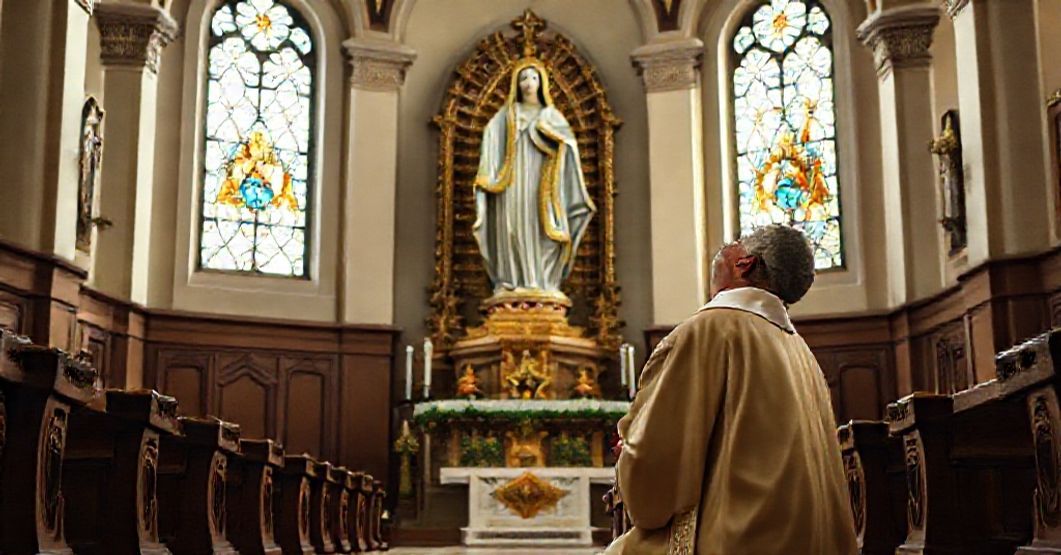Antipopes of the Antichurch



















Timeline of this heretical pontiff
Encyclical Letters
+ 15 posts1959
+ 7 posts1961
+ 4 posts1962
+ 2 posts1963
+ 2 postsApostolic Exhortations
+ 3 postsApostolic Constitutions
+ 93 posts1958
+ 6 posts1959
+ 87 postsMotu Proprio
+ 15 posts1958
+ 1 posts1959
+ 1 posts1962
+ 11 postsApostolic Letters
+ 151 posts1958
+ 4 posts1959
+ 63 posts1960
+ 78 posts1961
+ 1 posts1962
+ 4 posts1963
+ 1 postsSpeeches
+ 99 posts1958
+ 2 posts1959
+ 26 posts1960
+ 29 posts1961
+ 16 posts1962
+ 24 postsMessages
+ 6 posts1959
+ 4 postsHomilies
+ 4 postsLetters
+ 152 posts1958
+ 1 posts1959
+ 48 posts1960
+ 32 posts1961
+ 31 posts1962
+ 30 posts1963
+ 10 postsNot categorized
+ 1 posts1958
+ 1 postsNews feed


Cui Datum (1959.04.14)
The Latin brief “Cui Datum,” dated 14 April 1959 and issued under the name of John XXIII, declares Saint Joseph, Spouse of the Blessed Virgin Mary, as the principal heavenly patron of the Diocese of Tapachula (Tapacolensis), erected by Pius XII in 1957. It confirms the choice of the local hierarchy and faithful, grants the liturgical rights proper to a diocesan principal patron, and clothes the act in the usual juridical solemnity and perpetuity clauses typical of pre-conciliar Roman documents. Behind this apparently pious and traditional decree, however, stands a usurper inaugurating the conciliar revolution, instrumentalizing authentic devotions as camouflage for an emerging neo-church divorced from the true, integral Catholic Faith.


Quae festo (1959.04.15)
The document “Quae festo,” dated 15 April 1959 and signed by John XXIII, is presented as an apostolic letter confirming the choice of the Blessed Virgin Mary under the title of the Immaculate Conception as the principal heavenly patroness of the Diocese of Morón in Argentina. It recalls the erection of the diocese by Pius XII in 1957, notes the local devotion to Our Lady, cites the request of Bishop Miguel Raspanti, and, invoking “Apostolic” authority, solemnly declares and confirms Mary Immaculate as special patroness with the liturgical rights attached to a diocesan principal patron, with the usual formulae of alleged canonical perpetuity and nullity of contrary acts.


RENOVANS FACIEM (1959.04.26)
The document “Renovans faciem” of 26 April 1959, issued by John XXIII, is an apostolic letter announcing and regulating the beatification of Helena Guerra, foundress of the Oblate Sisters of the Holy Spirit (Sisters of St. Zita). It briefly recounts her life: her early piety, Eucharistic devotion, promotion of the cult of the Holy Ghost, charitable works, foundation of a congregation dedicated to girls’ education and to spreading devotion to the Holy Ghost, her trials and humiliations, the subsequent canonical processes, alleged miracles, and finally the concession of liturgical cult within specified territories. The entire text clothes John XXIII’s act in a seemingly traditional pneumatological and hagiographical narrative, while in reality it functions as an early programmatic manifesto: the Holy Ghost is subtly invoked as the legitimizing “new spirit” for the soon-to-be conciliar revolution and for a new “springtime” of a Church that will deny its own immutable foundations.


Mariani cultus (1959.05.02)
The document, issued by John XXIII on 2 May 1959, grants the title and privileges of a minor basilica to the church of the Blessed Virgin Mary of “Del Quinche” in the Archdiocese of Quito. It extols the antiquity of the sanctuary, the artistic beauty of the structure and its furnishings, the popular devotion to the image of the Virgin of Del Quinche, and the pastoral care provided there by clergy of the Congregation of the Oblates of the Most Holy Hearts of Jesus and Mary, concluding with the solemn juridical formula conferring the basilica dignity and its associated privileges.
Varia
Announcement:
– News feed –implemented
– Antipopes separate web sites with their all documents refutation – in progress
